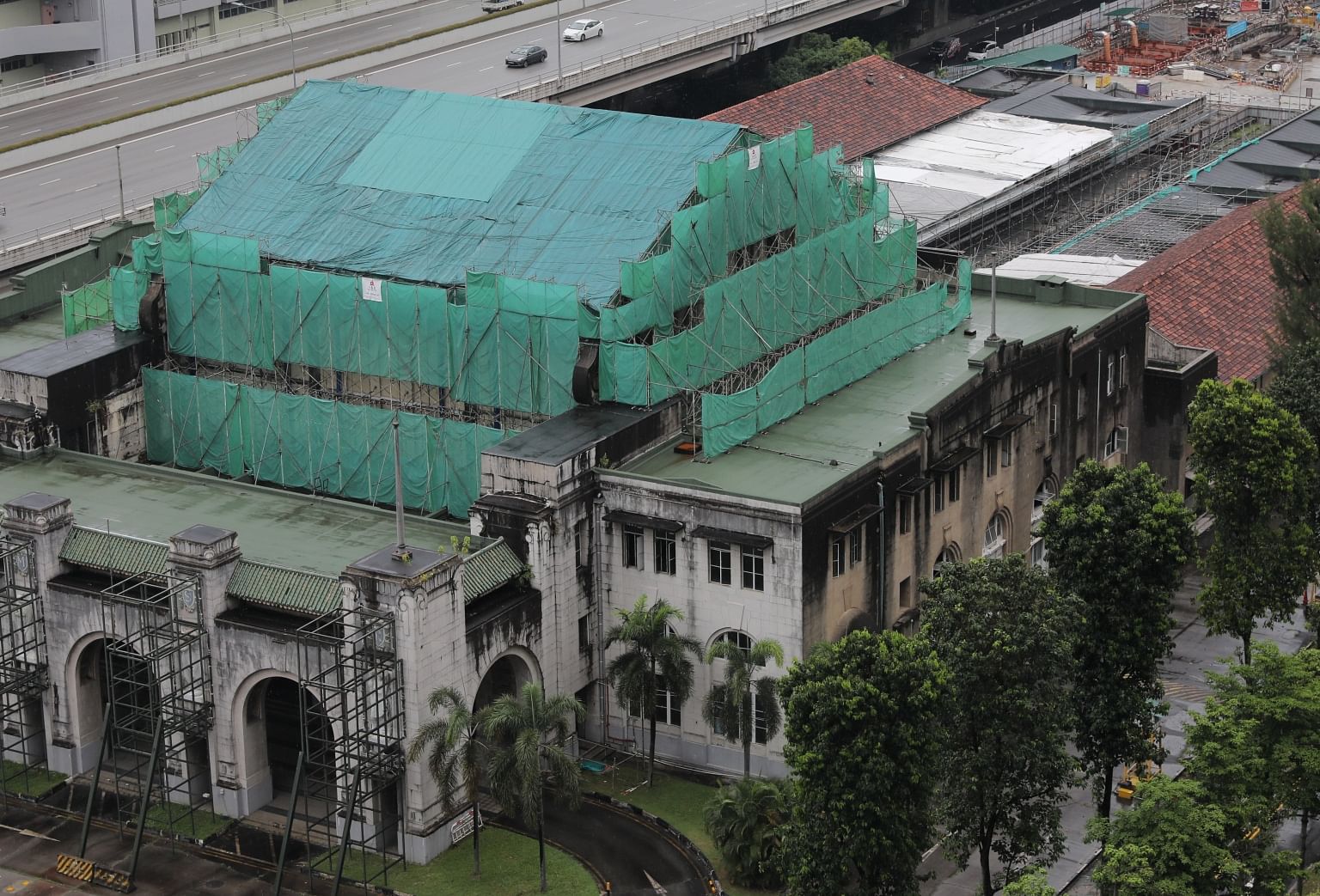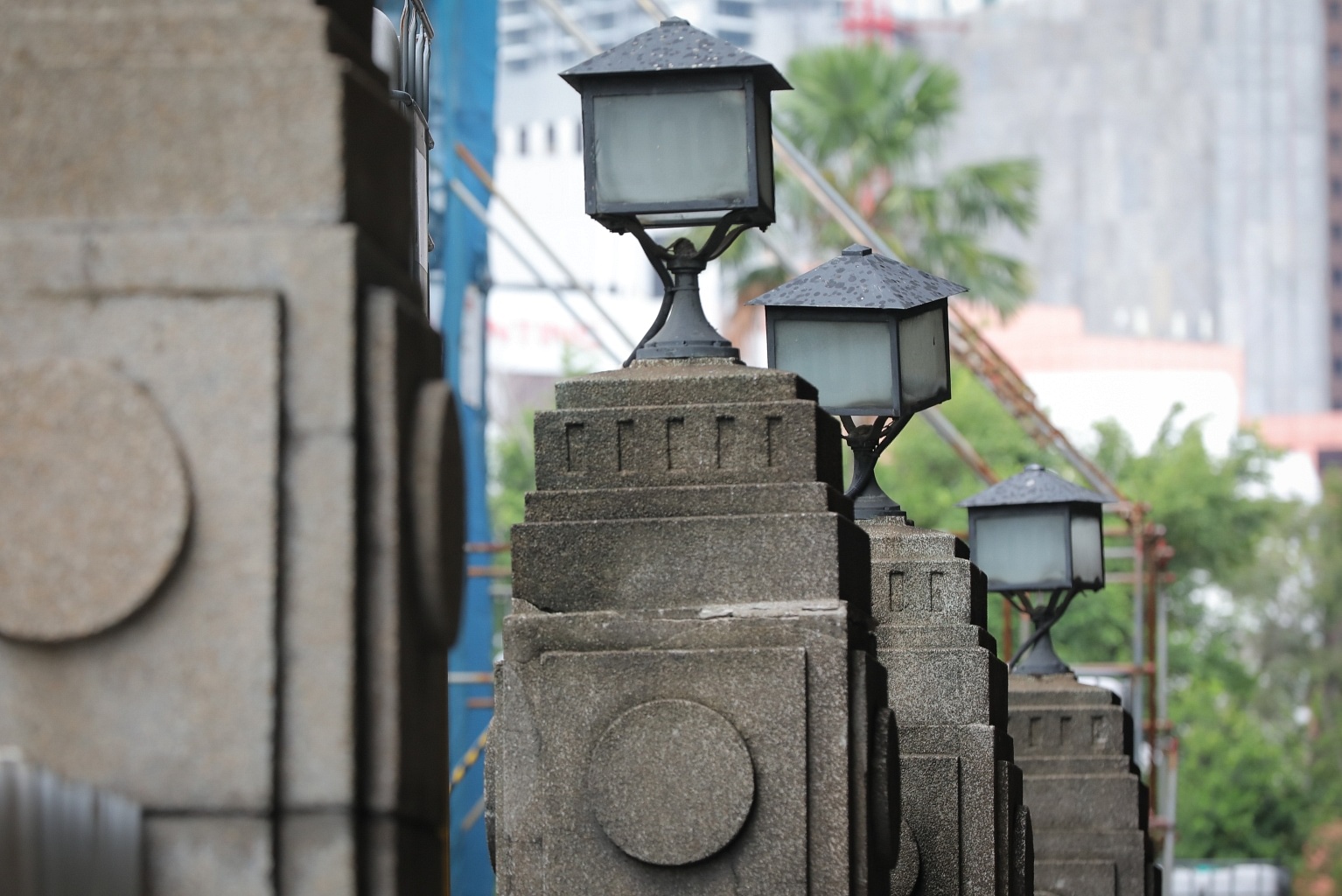Tanjong Pagar Railway Station to undergo restoration, completion expected by 2026
Sign up now: Get ST's newsletters delivered to your inbox

Ther former Tanjong Pagar Railway Station, seen on Aug 23, 2022.
ST PHOTO: ONG WEE JIN
Follow topic:
SINGAPORE - Mostly vacant for more than a decade, the former Tanjong Pagar Railway Station is set to get a new lease of life, with restoration works on the national monument set to begin in 2024 and slated for completion by 2026.
When reopened to the public, the former station could be repurposed as a civic and community institution, a commercial building with food and beverage options, or a hotel, according to tender documents seeking consultancy services for the restoration works that were published by the Singapore Land Authority (SLA).
Plans, including detailed uses, are still under study, said an SLA spokesman last Thursday (Aug 25) in response to queries by The Straits Times. He added that further details would be made available when ready.
According to the documents, restoration works are slated to begin in April 2024 and be completed by September 2026.
Opened in 1932, the station was vacated in 2011 following the cessation of rail services terminating there by Malaysian rail operator Keretapi Tanah Melayu in June that year. About two months before that, the station had been gazetted as a national monument, which means its form and facade have to be kept unchanged.
Appointed consultants will carry out technical feasibility studies and design restoration works in accordance with preservation guidelines by the National Heritage Board.

SLA said in the documents that the restoration works are estimated to cost $40 million. It also said a building and structural investigation conducted in 2019 revealed that the overall structural integrity of the former station, which has a gross floor area of about 11,000 sq m, is in "serviceable condition, subject to repairs".
"Flat roof slabs are severely deteriorated while beams and columns require localised repairs," said the agency, adding that the building has suffered from water seepage into its interior. Cracks, plant growth and staining can also be seen on the building's plaster facade.

The consultants are required to conduct a heritage impact assessment to mitigate the possible effects of the restoration works on the building's character, and are also encouraged to develop a heritage plan that will promote public appreciation for the historical building. These could result in storyboards and plaques being erected in the station.
The Urban Redevelopment Authority said in 2015 that the former station's next use will last for about 20 years, pending the development of the Greater Southern Waterfront. The station will also be the southern entry point to the 24km Rail Corridor, which runs till Kranji.
In 2017, about 580m of the station's platform canopies were cut into 63 pieces and removed, to allow construction works for the new Cantonment MRT station to take place beneath the platform area. The canopies will be reassembled at their original site when construction of the station - which is part of Circle Line 6 (CCL6) - is completed.
The authorities have said that Cantonment station will be integrated with the former Tanjong Pagar Railway Station, and that the stations on CCL6 - which also include Keppel and Prince Edward Road stations - will open in 2026.
Tunnelling works for CCL6 were completed in January 2022, and ran as close as 6.7m below the former railway station's piles, resulting in protection measures being deployed before tunnelling commenced. These included installing protective structures within and outside the building, and 600 monitoring instruments to detect building movement during tunnelling.

Heritage blogger and author Jerome Lim said the integration of the former railway station and upcoming MRT station will help to recall the former station's railway life. He hoped the former station building would not be used as "yet another retail and F&B destination".
"Its use as a hotel is perhaps more appropriate, seeing that its upper floors were designed to house a station hotel which operated in it for a period of time, although this might mean that public access will be restricted," said Mr Lim.

He added that the station was built as a gateway from continental Asia to Europe, as well as to the Indian and Pacific Oceans via the nearby port in Tanjong Pagar. This could be remembered by having a transport or maritime museum on site that tells of the history of Tanjong Pagar. Others, such as forum letter writers to ST, have also suggested that the station could house a museum since it was announced in 2010 that train services to it would cease.
"The former station also oozes old world charm, and if properly restored, it can be especially evocative of the age in which it was built, a time when the romance of travel was at its height," said Mr Lim, who hopes that the station's vaulted main hall will be retained, as it "provided passengers with that sense of arrival and departure".

